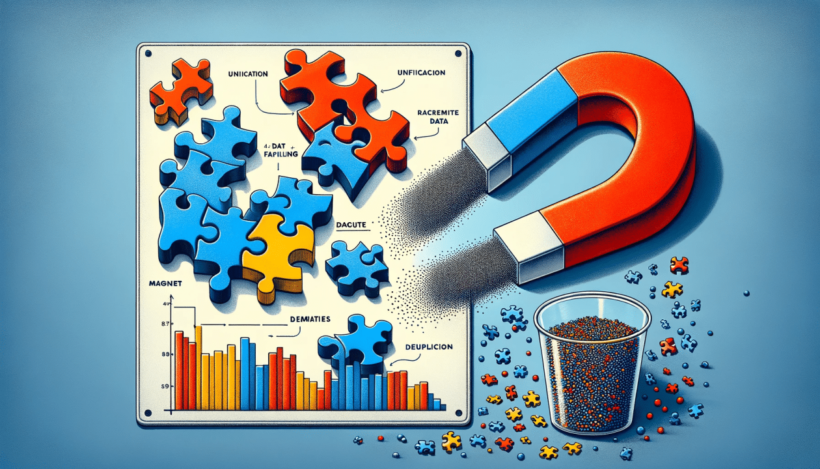What is the Best Deduplication Tool?
Published by Bryce Jones on March 1, 2023
Your salespeople are working hard to bring in new leads and convert those leads into sales. But a flaw in your system is constantly undermining their efforts and holding them back, and that’s duplicate data.
Duplicate records account for up to 30% of data in your CRM systems. And each time your salespeople touch that data or spend time correcting it, you’re losing time, money and the ability to reach your growth goals. Duplicates can cause internal conflict over account or lead ownership as well as degrade the Customer 360 – the notion of having a single source of truth for each customer.
There are tools designed to help you get rid of duplicate data, but many of these tools don’t fully solve the problem and are difficult to scale. And the longer that duplicate data sits in your system, the bigger the problem gets and the more time your people spend trying to sort through it and do their jobs.
However, a new way to approach duplicate data allows you to quickly get rid of duplicates, do so at scale and give your people the flexibility to manually review duplicate data when needed.
The new deduplication framework
The old way of managing duplicates lacks flexibility and is based on rigid rules. This approach creates problems and doesn’t catch all duplicates, allowing many to still slip through the cracks. The new framework leverages automation and mass merging, and captures contextual knowledge to spot duplicates quickly. Here’s a breakdown of the framework:
Assess and automate when confident
The new framework that Delpha can offer you leverages advanced AI to assess and give each of your records a score that can be used to automate. This score is based on the likelihood of the record being a duplicate, with one being not very likely and 100 being very likely. If you set a threshold of 95, everything above that threshold is automatically merged.
At the same time, data enrichment works in the background to make every record more complete, so duplicates are spotted more easily. The technology pulls from different sources, like LinkedIn, to enrich the record with missing data and become more accurate.
Additionally, it integrates with other technologies to create a single source of truth. Any changes you make in Salesforce, for example, can be pushed out to other databases to ensure accuracy across all your data.
Mass merge to improve productivity and decrease duplications
Most deduplication tools allow you to merge duplicate records, but only in small batches, which can hold you back. The new framework has no limitation on how many files you can merge at once. As a result, you can clean up your duplicate data faster.
For example, Delpha gives you a list view of potential duplicates and their confidence scores. If you set up the rules to automatically merge any records with a confidence score of 95 or higher, it is done automatically. But everything below that threshold allows you to easily make decisions from a single view. You can click “auto yes” or “auto no” for the files below your automation threshold. Every file with an “auto yes” checked is automatically merged at the end of the evening (or at the time you set), with no limitations on the quantity of files you can merge.
Preserve contextual knowledge at the user level
Your people are valuable and know things about your database that AI doesn’t. The new framework realizes this and has left space for manual adjustments when needed. But how does this work? Let’s say that a record has a confidence score of 60, so it doesn’t meet the automation criteria threshold you set of 95 or higher. As a result, you kick the record back to the account holder to make the call and decide whether the file should be merged or not. And since they can do this from a single screen, it doesn’t take much time.
Additionally, since the new framework is enriching the data, the confidence score is more likely to be on point. For example, a file might have a confidence score of 20, but after enrichment, that score becomes 80. With more complete data, the sales rep can use contextual knowledge and technology to decide whether the record is a duplicate. As a result, you can get a 360-degree view of the data.
Clearing duplicates fast so they don’t create a ‘pile up’
Removing duplicates successfully requires you to find the sweet spot of leveraging AI to automate when you want to automate but still having the freedom to handle the task manually. And when you do this well, you can get the duplicates out of your system quickly, clean up your database and empower your salespeople to spend less time on low-level activities so they can close more deals and grow the business.
Learn more about duplicate management







